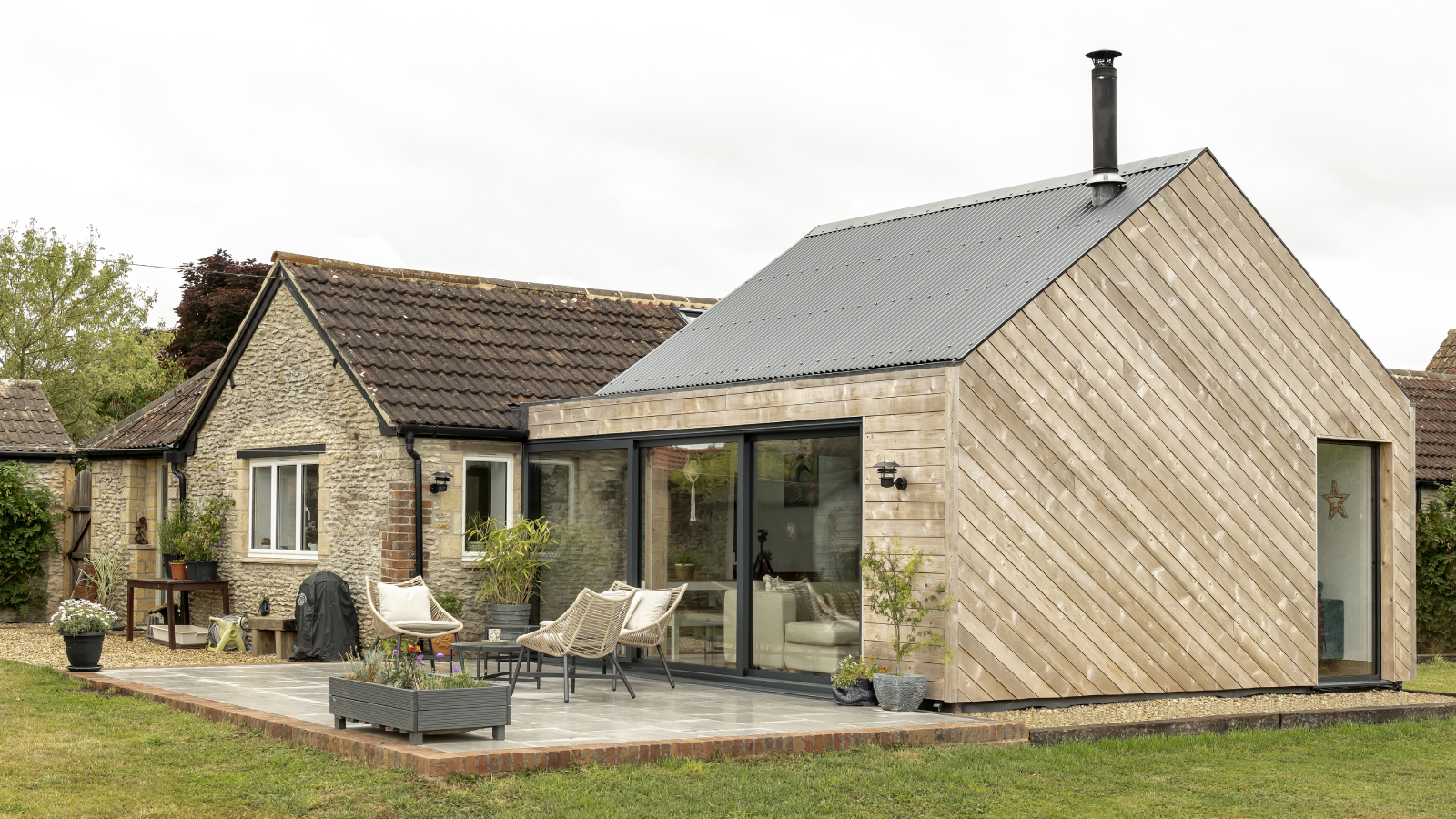Self Build Warranties
There is a lot of confusion amongst self builders surrounding the concept of warranties — what are they and how do they differ from Building Control?

A structural warranty, or structural/latent defects insurance, is defined as “an insurance policy that covers defects in the workmanship, design and materials used in the construction of a self build. The warranty provider will check your plans (known as a technical audit) and inspect the house while under construction at various periods — normally foundations, superstructure, roof pre felt and batten, pre plaster and completion,” says ProAktive’s Andrew Reardon.
“If something goes fundamentally wrong with your house such as problems with walls cracking, the roof structure or a fault with damp proofing, the warranty provider will fix it instead of you having to chase up builders or architects,” Andrew adds.
Each policy will be different, so it’s worth checking the small print to find out exactly what is covered. Typically, major faults in the design and construction will be covered, but snagging defects are excluded. As a general rule: the wider the cover, the more expensive the policy.
Get a quote now to protect your project
Most self build warranties will cover the first 10 years of a home’s life, and for self-builders, it will only be valid if the build is regularly inspected by the warranty provider’s surveyors (which may be independent of the building control inspectors) and meets the technical standards of the provider.
Isn’t This All Covered By Regular Building Inspections?
In theory, yes. In practice, the two systems of inspection operate side by side and are concerned with slightly different areas. Besides, if things go wrong, you can’t make a claim against your building inspector.
Local authority building inspectors have recently begun to offer their own warranty scheme (see LABC), but it’s administered independently and uses different inspectors.
Bring your dream home to life with expert advice, how to guides and design inspiration. Sign up for our newsletter and get two free tickets to a Homebuilding & Renovating Show near you.
How Long Does Cover Last?
Usually for 10 years. And some warranties provide more cover in years one and two than they do in subsequent years.
A warranty is almost invariably charged as a single premium and costs vary from £1,000 up to £5,000, depending on the size and complexity of the project. The average cost for a warranty is £2,000.
“Cover can vary, so cheapest isn’t always best as wider cover will cost more. It’s well worth reading the policy detail to compare providers rather than on price alone,” advises Andrew Reardon of ProAktive.
Why Doesn’t Household Insurance Cover These Risks?
New homes present some significant risks which usually appear in the first two years after completion, and a warranty is the normal method of covering these risks.
Do I Have to Have One?
It’s not compulsory, but most lenders will require one, and you may have trouble selling a house less than ten years old if you don’t have a warranty in place.
A structural warranty, like most insurance policies, is not compulsory under law, but it’s practically impossible to sell your home within 10 years without one and most lenders specify that you have one in place too.
Plus, a structural warranty is often a requirement for a self build mortgage. So while it might not be a legal requirement, you will encounter several hurdles if you choose not to take out a policy.
A few self-builders will opt for an architect’s certificate: a signed statement confirming that the build has been supervised and constructed in accordance with accepted building practices. While it may be cheaper than a warranty, it typically only covers six years (as opposed to 10) and is not an underwritten insurance policy. Any issues that arise are claimed against the architect’s professional indemnity insurance, and you will need to be able to prove negligence in order to be successful — an expensive and ugly process.
In reality, there are no real alternatives to a structural warranty if you have a self-build mortgage or you are looking to sell within 10 years — it is likely a cost you will have to bear, but one that provides a great deal of peace of mind and protection for you and your new home.
Some self builders opt for an architect’s certificate over a warranty, which is a signed statement confirming that the house has been supervised during the build period and constructed in accordance with accepted building practices. It’s cheaper than a warranty, in the region of £1,000, but is only valid for six years and is not an insurance policy, meaning any issues that arise need to be claimed against the architect’s professional indemnity insurance, and you will need to be able to prove negligence in order to be successful — an expensive and ugly process.
It also doesn’t provide any cover for the insolvency of the builder. An increasing number of lenders are asking for a full structural warranty to be in place before releasing funds.
Who Sells Warranties?
It’s a small, specialised market and the big household insurers won’t be much help, but nevertheless there are enough providers for the market to be quite competitive. Homebuilding & Renovating has partnered with leading insurance specialist Self Build Zone to provide bespoke solutions at market-leading rates for its readers.
Get a quote now to protect your self build
Other providers include:
- LABC (Local Authority Building Control)
- BuildCare Structural Warranty
- Protek Selfbuild Structural Warranty
- ProAktive Selfbuild Warranty
Warranty providers often work hand in hand with private building inspectors and offer a range of services over and above warranties and site inspections, such as site insurances, air-pressure testing and SAP calculations. Self-build Zone in particular has set itself up as a one-stop shop for dealing with much of the red tape bedevilling the typical self build project.
There are also brokers, such as Evolution Insurance, who specialise in the home warranty market and will search out the best deal for you.
When Should I Buy a Self Build Warranty?
The longer you leave it, the higher the costs will be. Whilst some warranty providers cover a self builder halfway through a project, others wont. If a self builder is at the poured concrete stage before contacting a warranty provider, expect to pay an extra 25%. This rises to 50% if at first floor joist, 75% to wall plate (prior to roof), and 100% if structurally complete.
It is best to purchase your warranty at an early stage. It needs to be bought at least a couple of weeks before you start on site so that the provider’s inspectors can audit the design drawings prior to the build going on site.
If your warranty provider arranges the building control too, they will need to serve an Initial Notice on the local authority so that inspections can be sorted. A warranty can be provided retrospectively (even once the build is complete), but the further into the build you are, the more expensive a warranty becomes.
What if I Want to Sell My Self build with No Warranty?
As lenders have tightened their criteria, this is becoming a more common occurrence. In order to sell, you will need a retrospective warranty. If you fail to take out a warranty during construction but retrospectively decide that you need cover, Self-Build Zone and Protek are the only insurers able to help. They will inspect the property and may be able to offer cover for the remainder of the 10 year period since completion.
What is Covered? What isn’t?
Generally the cover is quite limited: latent defects insurance is really just concerned with major faults in the design or construction of a house, such as subsidence, drain problems or rain penetration. Snagging defects such as sticking doors or creaking floors are usually excluded. It’s well worth checking the small print to see what’s covered and what’s not: items like double-glazing failure and roof tile damage are optional. And, of course, as a rule, the wider the cover, the more expensive the policy.
Is There Anything Else I Need to Know?
Self build warranties often come with a ‘lock-in’ of one or two years which restricts the transfer of the warranty to a new owner. For most self builders, this is not a problem, but it can cause an issue when circumstances change (typically death or divorce). In exceptional cases, the warranty providers have the power to relax the lock-in. Check before you sign up.
Self Build Site Insurance
Quite distinct from both building inspections and warranties, site insurance looks to cover the risks from the building process itself. Site insurance covers you for accidents on site to people working or visiting. It may also cover for fire damage or theft, depending on the clauses and the exclusions.
(MORE: Self Build Site Insurance)
Mark is the author of the ever-popular Housebuilder’s Bible and an experienced builder. The Housebuilder’s Bible is the go-to hardback for self builders; originally published in 1994, it is updated every two years with up-to-date build costs and information on planning and building regulations, and is currently in its 14th reiteration.
He has written for publications such as Homebuilding & Renovating for over three decades. An experienced self builder, his latest self build, a contemporary eco home built to Passivhaus principles, was created on a tight urban brownfield plot.

